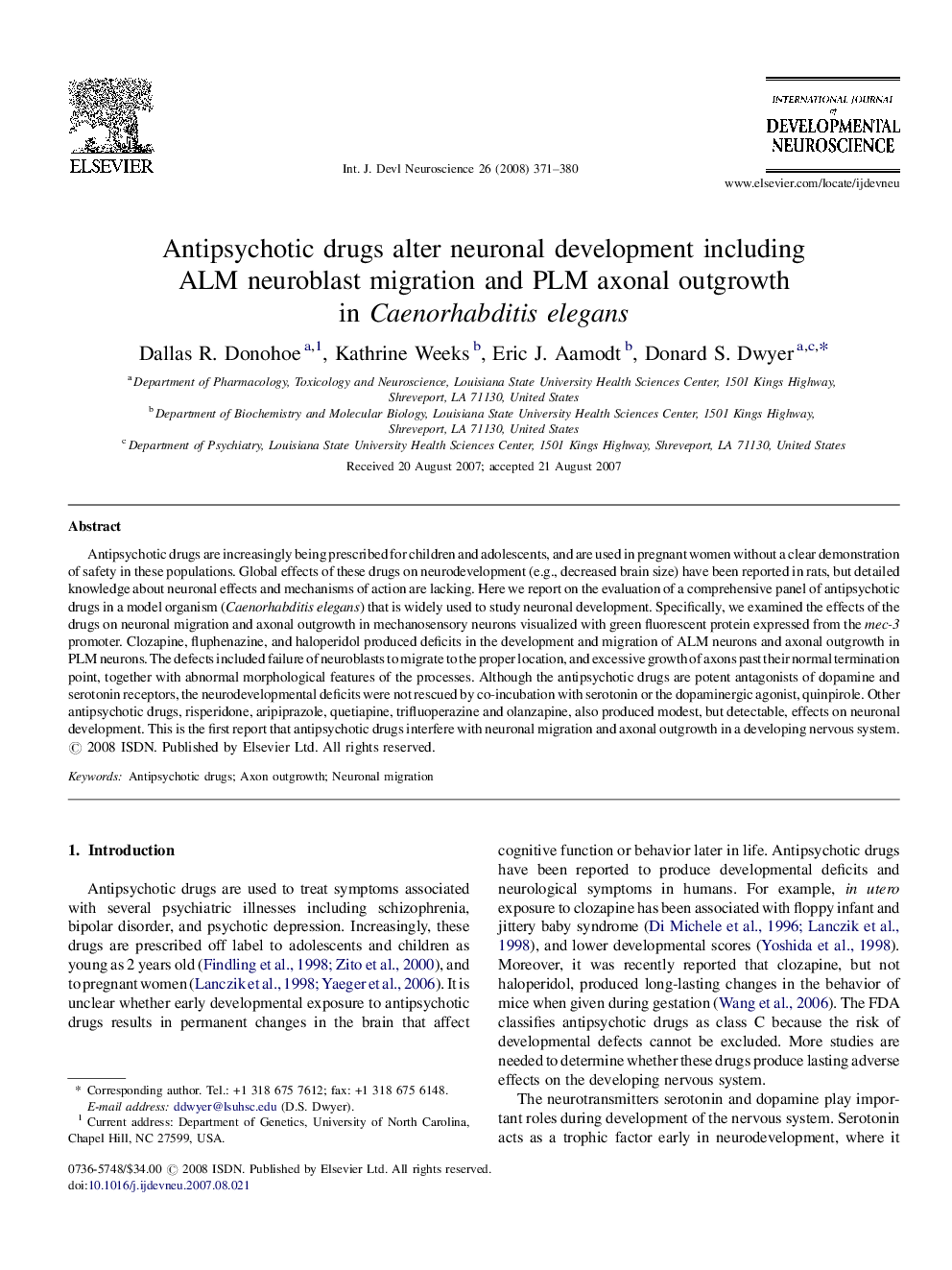| Article ID | Journal | Published Year | Pages | File Type |
|---|---|---|---|---|
| 2787053 | International Journal of Developmental Neuroscience | 2008 | 10 Pages |
Antipsychotic drugs are increasingly being prescribed for children and adolescents, and are used in pregnant women without a clear demonstration of safety in these populations. Global effects of these drugs on neurodevelopment (e.g., decreased brain size) have been reported in rats, but detailed knowledge about neuronal effects and mechanisms of action are lacking. Here we report on the evaluation of a comprehensive panel of antipsychotic drugs in a model organism (Caenorhabditis elegans) that is widely used to study neuronal development. Specifically, we examined the effects of the drugs on neuronal migration and axonal outgrowth in mechanosensory neurons visualized with green fluorescent protein expressed from the mec-3 promoter. Clozapine, fluphenazine, and haloperidol produced deficits in the development and migration of ALM neurons and axonal outgrowth in PLM neurons. The defects included failure of neuroblasts to migrate to the proper location, and excessive growth of axons past their normal termination point, together with abnormal morphological features of the processes. Although the antipsychotic drugs are potent antagonists of dopamine and serotonin receptors, the neurodevelopmental deficits were not rescued by co-incubation with serotonin or the dopaminergic agonist, quinpirole. Other antipsychotic drugs, risperidone, aripiprazole, quetiapine, trifluoperazine and olanzapine, also produced modest, but detectable, effects on neuronal development. This is the first report that antipsychotic drugs interfere with neuronal migration and axonal outgrowth in a developing nervous system.
